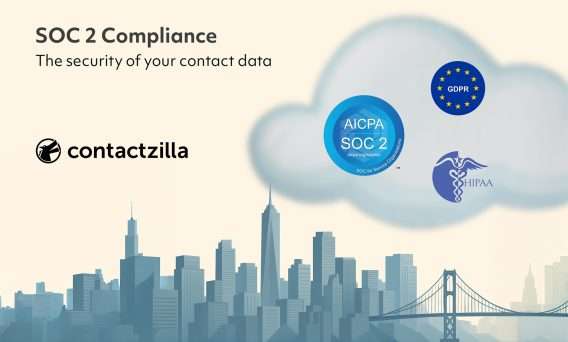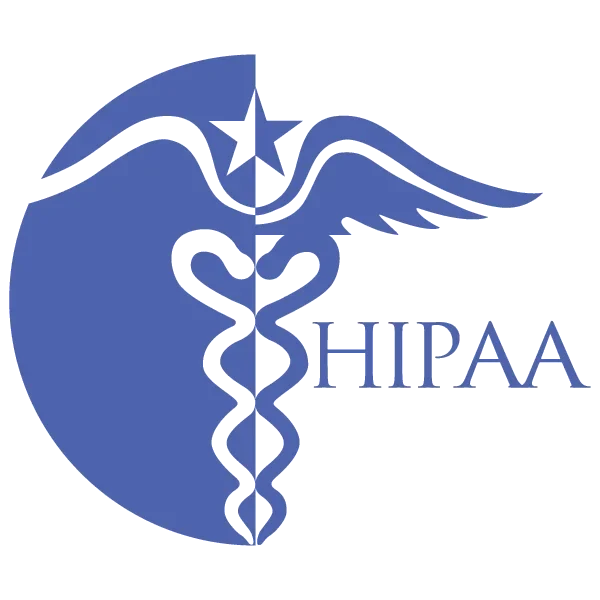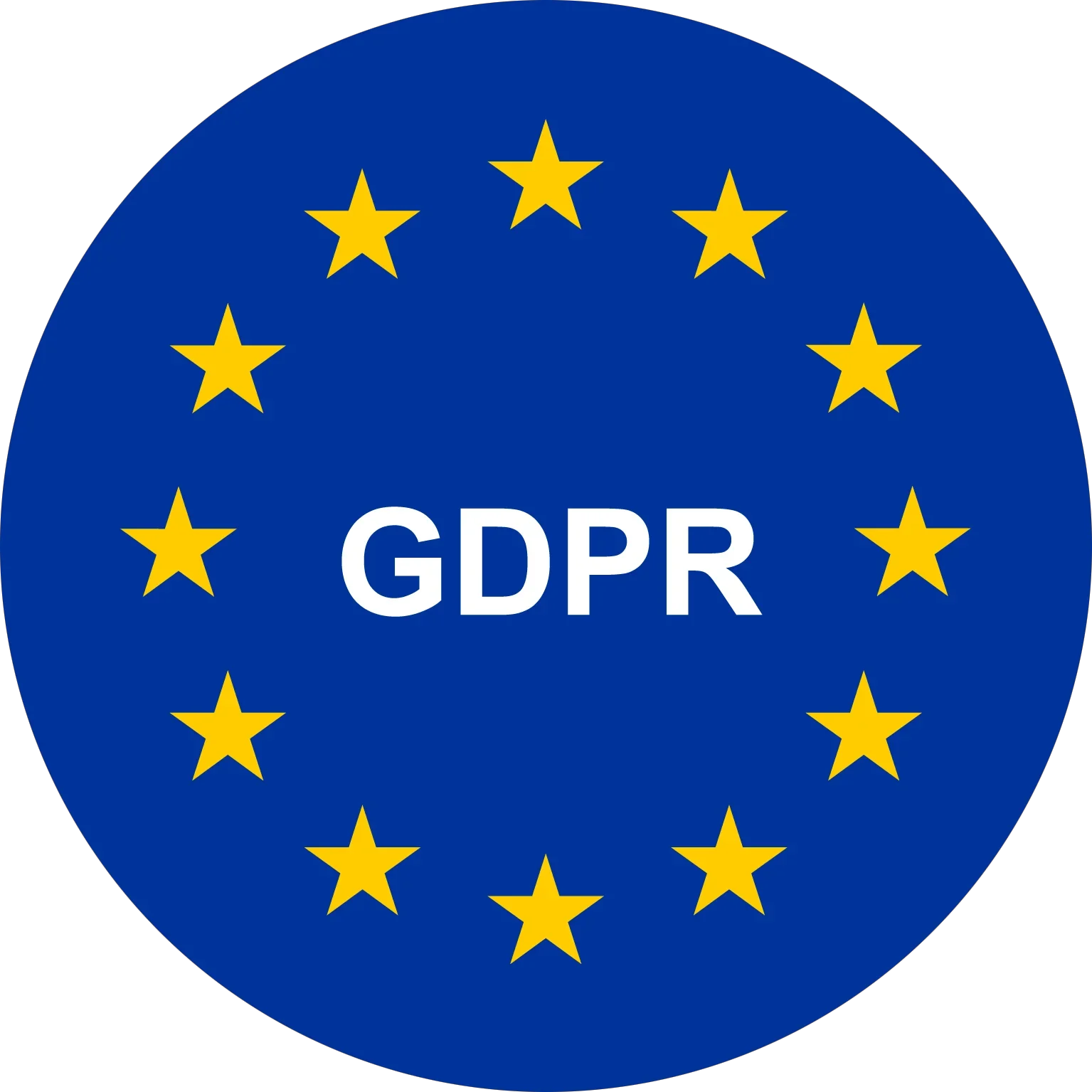SOC 2 Compliance and the Security of Your Contact Data

Introduction
In contact management, trust starts with how you handle the details. Names, phone numbers, job titles, private notes. Small pieces of information that, together, can reveal a lot about your organisation. For many teams, this data sits quietly in the background, keeping everything connected. But it deserves the utmost protection.
Over the past year, we’ve worked with the awesome team at Sprinto, who guided us through the certification journey, to prepare for SOC 2 complianc. It’s a recognised standard that shows an organisation has the systems and processes in place to keep information secure and available. After months of preparation, reviews, and independent audits, we’ve achieved it.
Here’s what SOC 2 means for Contactzilla and why it matters to the organisations that trust us with their contact data.
Why We Committed to This Process
Managing contact information means handling details that travel between teams, devices, and locations.
For many organisations, reliable contact data is what keeps daily operations running smoothly. In healthcare, emergency services, and public sector teams, having accurate lists can be essential. It means people can coordinate quickly, reach the right person in a crisis, or keep communication clear across different sites.
We have customers who rely on Contactzilla to keep critical contacts up to date across hundreds, sometimes thousands, of devices. In these environments, clear security standards are simply expected.
Over time, expectations around data protection have become more rigorous. Many organisations now ask for evidence that a provider’s systems can stand up to independent scrutiny. Sometimes that means lengthy security questionnaires. Sometimes it’s a simpler question: Are you SOC 2 certified?
We committed to this process because customers deserve clear evidence of how their data is protected. SOC 2 helps remove uncertainty. It means procurement teams can trust that our controls have been tested. It means IT departments spend less time assessing risk. And it means anyone responsible for contact data has fewer barriers to feeling confident about how it’s handled.
You can explore all our security policies, compliance reports, and safeguarding practices in our Trust Centre. There, you’ll find full documentation on how we meet SOC 2 requirements, support HIPAA, uphold GDPR standards, and more.
Share read-only contact lists across 100’s of devices
 14 DAY FREE TRIAL
14 DAY FREE TRIAL  NO CREDIT CARD REQUIRED
NO CREDIT CARD REQUIRED
What SOC 2 Compliance Covers
SOC 2 is a framework developed by the American Institute of CPAs. It defines how service providers should manage customer data.
The certification covers several key areas, including security, availability, and confidentiality. In practice, that means looking closely at how systems are monitored, how data is protected against unauthorised access, and how information remains available when people need it.
For contact management, this matters because address books often hold information that isn’t for everyones eyes. That might be names and phone numbers and internal directories. It could also be emergency contact plans, or details about how teams work together. SOC 2 certification offers a clear way to show that these records are protected to a recognised standard and that we handle all of this data with care and consistency.
SOC 2, HIPAA, and GDPR – How They Work Together
SOC 2 is an important benchmark, but it isn’t the only framework we follow. Many of our customers work in sectors where compliance goes further, and where the stakes for data protection are even higher.
HIPAA Compliance for Healthcare Organisations

In healthcare settings, contact information plays a huge role in coordinating patient care and keeping clinical teams connected. It can include, staff directories, details that help coordinate patient care and share updates between medical teams. This is why Contactzilla maintains compliance with HIPAA (the Health Insurance Portability and Accountability Act).
HIPAA sets out strict requirements around how health-related data is stored, accessed, and shared. It defines what counts as Protected Health Information (PHI) and sets expectations for administrative, physical, and technical safeguards.
For our customers in hospitals, clinics, and community health organisations, HIPAA compliance means they can use Contactzilla knowing it aligns with their legal obligations. It also provides reassurance that sensitive informatio, like emergency contacts, escalation paths, and staff directories has the protection it requires.
GDPR Compliance for European Customers

Many of our customers are based in Europe or handle contact information about people who are. GDPR sets clear expectations about how that data should be managed.
It defines principles around privacy, transparency, and the rights individuals have over their data. In practice, this means that organisations need to be able to show what information they hold, control who can see or change it, and remove it when there’s a legitimate request.
Within Contactzilla, GDPR compliance starts with how we protect and process your data behind the scenes. It also means giving you tools to help manage your own responsibilities. For example, you can see which records you’ve stored, decide who can access them, and export or delete contacts if needed. If someone asks to see what details you hold or requests that their information be removed we can help you respond quickly.
GDPR compliance isn’t only about checking a box. It’s part of showing that you respect the people behind each name and number.
How These Standards Work Together
Each of these frameworks; SOC 2, HIPAA, and GDPR, brings its own focus. SOC 2 measures whether controls are designed and operating effectively. HIPAA defines safeguards for healthcare information. GDPR centres on privacy and individual rights.
Together, they shape how we design and maintain Contactzilla. They guide the way we handle customer data behind the scenes and provide a clear standard you can point to when someone asks, How do you protect this information?
What Comes Next
Achieving SOC 2 isn’t the end of the process for us. It’s a foundation to keep building on.
In the months ahead, we’ll continue regular audits and reviews to make sure our systems stay up to date. We’re also investing in new features that make it easier to control who can see and edit contact information. And we’re committed to ongoing training so our team understands both the practical and legal responsibilities that come with handling customer data.
Protecting your contact data
Thank you for trusting us with your contact data. We know these records help your teams stay connected and work with confidence.
Frequently Asked Questions
How does SOC 2 compliance protect my contact data?
SOC 2 compliance requires independent review of your provider’s security controls—covering how contact data is protected against unauthorised access, remains accessible when needed, and stays confidential. It offers proof that systems are designed and operate securely.
Is SOC 2 compliance required by law in the United States?
No. SOC 2 compliance is not mandated by U.S. law. It’s a voluntary standard designed to assure customers and partners that your security, confidentiality, and availability controls meet independent audit criteria
How often is a SOC 2 audit needed?
SOC 2 Type 2 audits are usually conducted annually to ensure ongoing compliance and control effectiveness. Some organisations choose more frequent audits (e.g. every 6 months) after major changes or to meet client or regulatory demandsWhat should I look for in a SOC 2-compliant vendor?
What is the difference between SOC 2 Type 1 and Type 2?
SOC 2 Type 1 evaluates whether the right security controls are designed correctly at a single point in time. Type 2 goes further, assessing whether those controls actually work consistently over a period (typically 3–12 months)
Can SOC 2 compliance include HIPAA and GDPR requirements?
Yes. SOC 2 focuses on general security and confidentiality, but its controls can be aligned with HIPAA’s safeguards for health data and GDPR’s privacy rules. By mapping controls across these standards, organisations can streamline compliance for contact information across multiple regulations
What are the Trust Services Criteria in SOC 2?
SOC 2 certification is based on five Trust Services Criteria: Security, Availability, Confidentiality, Processing Integrity, and Privacy. All reports require Security; the other four are included as needed to match your service and data handling practices